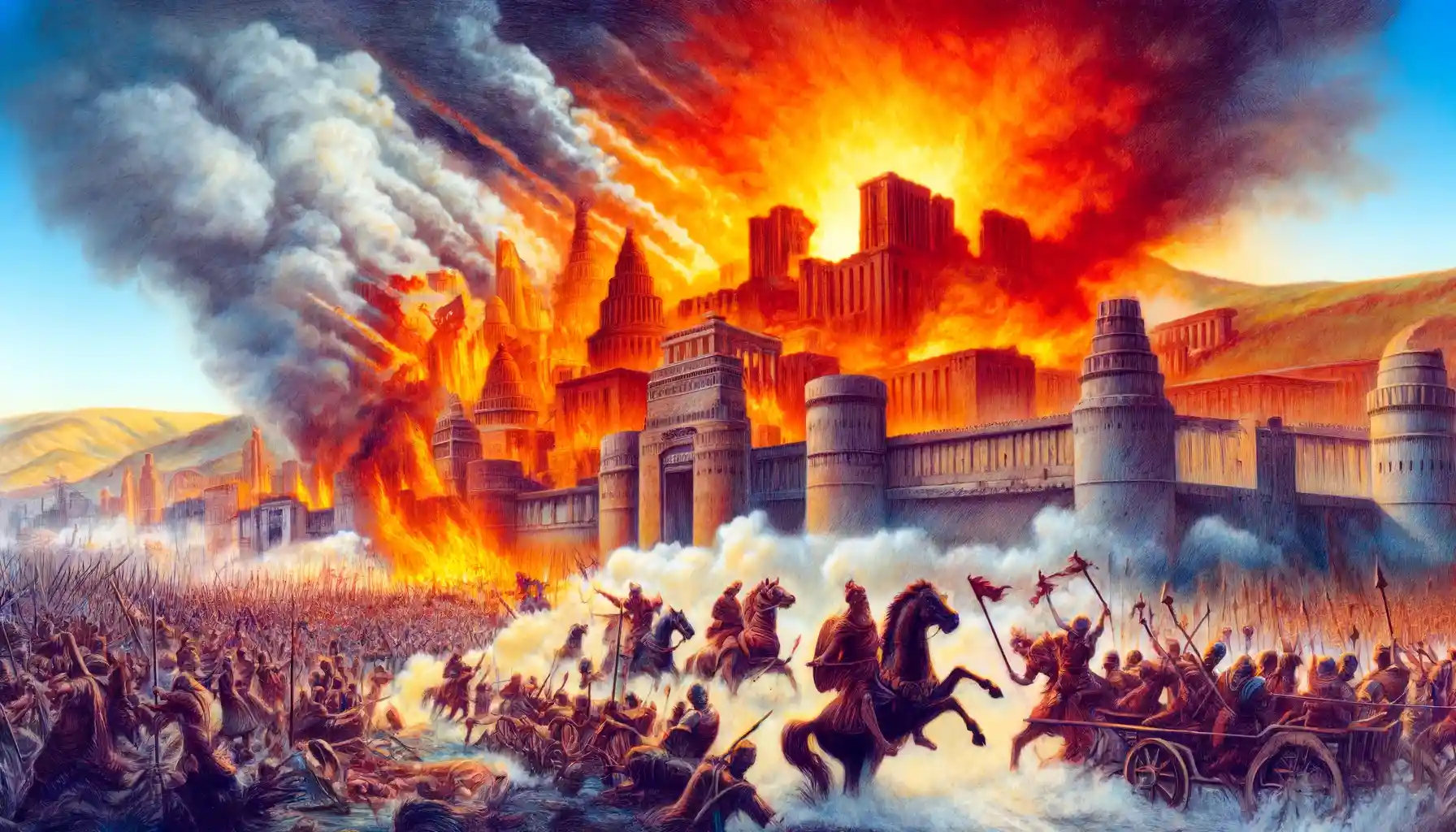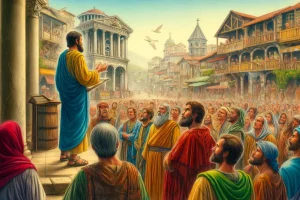
The Book of Nahum
The Book of Nahum is a prophetic text from the Old Testament, known for its focus on the impending doom of Nineveh, the capital of the Assyrian empire. Here are some key facts about the Book of Nahum:
- Authorship: The book is attributed to Nahum, whose name means “comforter.” Little is known about him beyond what is mentioned in the text.
- Date: Nahum likely prophesied during the late 7th century BCE, around 663-612 BCE, a period after the fall of Thebes in 663 BCE (as mentioned in Nahum 3:8) and before the fall of Nineveh in 612 BCE.
- Themes:
- Divine Judgment: Nahum describes the fall of Nineveh as a manifestation of God’s judgment against Assyria’s tyranny and wickedness.
- God’s Sovereignty: The book emphasizes God’s control over the nations and His ability to protect and vindicate His people.
- Justice and Retribution: Nahum presents a vivid portrayal of justice, highlighting that cruelty and oppression will ultimately be met with divine retribution.
- Structure: Nahum consists of three chapters. The first chapter introduces God’s character and His power over nature and nations. The second and third chapters vividly describe the siege, plunder, and ultimate destruction of Nineveh.
- Key Passages:
- Nahum 1:3: “The LORD is slow to anger but great in power; the LORD will not leave the guilty unpunished.”
- Nahum 2:13: “’I am against you,’ declares the LORD Almighty. ‘I will burn up your chariots in smoke, and the sword will devour your young lions. I will leave you no prey on the earth.'”
- Literary Features: Nahum is noted for its poetic style, vivid imagery, and dramatic descriptions, particularly in the portrayal of Nineveh’s downfall.
- Theological Significance: Nahum’s message underscores the theme that God is just and will not tolerate injustice and oppression indefinitely. It also serves as a comfort to Judah, affirming that their oppressors will be dealt with decisively.
The Book of Nahum, one of the minor prophets in the Old Testament, is a concise but powerful prophecy focused on the downfall of Nineveh, the capital of the Assyrian empire. Here is a detailed analysis of this book, examining its context, structure, themes, and literary qualities.
1. Historical Context
Nahum prophesied in the late 7th century BCE, a period marked by the Assyrian empire’s decline. His prophecy occurs after the destruction of Thebes in 663 BCE and before the fall of Nineveh in 612 BCE. The Assyrians were known for their brutal military campaigns and oppressive rule, particularly harsh towards the Kingdom of Israel and Judah. Nahum’s prophecy provides a divine response to Assyria’s atrocities, especially following the earlier warnings by the prophet Jonah.
2. Structure
The Book of Nahum is structured into three chapters:
- Chapter 1 introduces the theme of God’s wrath and power. It is poetic and establishes God’s character as both just and omnipotent.
- Chapters 2 and 3 describe the siege and subsequent sacking of Nineveh in vivid detail, using a mix of prophetic declaration and poetic description to bring the scenes to life.
3. Major Themes
- Divine Judgment: The primary theme of Nahum is the judgment against Nineveh as a divine response to their evil deeds. It asserts that God is just and will punish wrongdoing, which in this case is manifested through the military defeat of Nineveh.
- God’s Sovereignty: Nahum emphasizes that God has control over all nations and events. The prophecy reassures that no power, no matter how formidable it seems, is beyond God’s reach or exempt from His justice.
- The Inevitability of Divine Retribution: The detailed description of Nineveh’s fall underlines the inevitability of divine retribution. It serves as a warning to all who commit atrocities that their actions will have consequences.
4. Literary Features
Nahum is notable for its vivid imagery and poetic force. The description of the siege of Nineveh is particularly dramatic, filled with metaphors and similes that paint a vivid picture of chaos and destruction. For example, the chariots are described as flashing like torches and running like lightning.
5. Theological Implications
- Justice and Mercy: While Nahum focuses predominantly on judgment, it also subtly communicates the theme of mercy. The destruction of Nineveh is portrayed not just as retribution but also as a deliverance for those oppressed by the Assyrians.
- The Problem of Evil: Nahum addresses the problem of evil by affirming that God’s patience with wicked nations is not indefinite—justice will ultimately prevail.
6. Contemporary Relevance
The book’s message that tyranny and oppression will not last forever offers a timeless reassurance of divine justice. It speaks to the hope for the ultimate righting of wrongs and the restoration of peace and order.
7. Conclusion
The Book of Nahum, while focused on historical events, transcends its time in delivering a universal message about divine justice and power. It assures that no empire, no matter how powerful, can escape accountability for its actions, providing a profound meditation on the dynamics of power, justice, and divine intervention in human affairs.
Tag:7th century BCE, Assyrian empire, deliverance, divine intervention, divine judgment, divine retribution, fall of Nineveh, God's wrath, historical prophecy, justice, military destruction, minor prophets, moral order, Nahum, Nineveh, Old Testament, oppression, poetic imagery, prophecy, sovereignty of God



